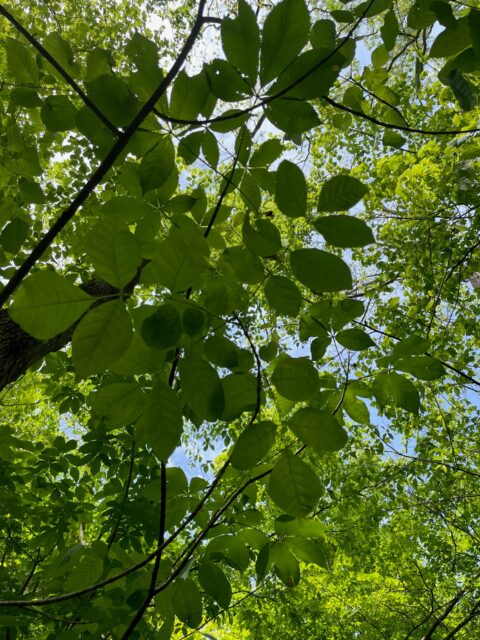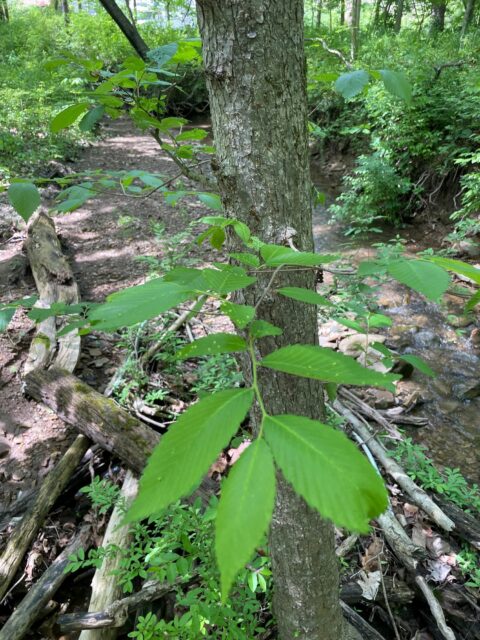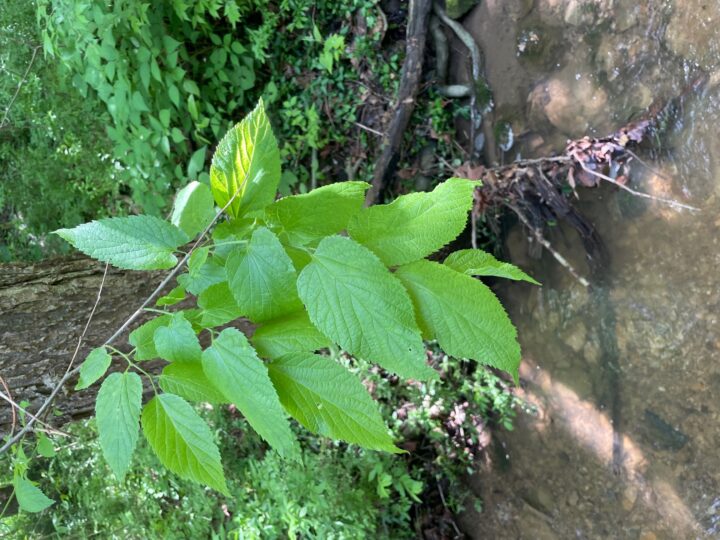What’s That Thing with Bark? An Intro Into Curing Tree Blindness
Ohio is home to a diverse set of tree species that are often overlooked by those with the untrained eye. Tree blindness, a term explained by Popkin in an opinion piece by The New York Times occurs when people live their lives without learning about the trees around them. Tree blindness can lead to a lack of appreciation of trees beauty and importance in the natural world. To cure this, building a knowledge of the trees can help make it easier to distinguish them from another, and truly appreciate them as living things. Some methods of learning trees include using field guides, speaking with people that have studied trees, and exploring online articles such as this one. Once you start, using distinguishing features such as leaf arrangement, shape, bark texture, and surrounding habitat can make identifying trees a fun and invaluable skill.
Sugar Maple
To start our journey of curing tree blindness we will be focusing on one of the most common species in the state, Acer saccharum also known as the sugar maple. Sugar maples are a part of the Sapindaceae family and share similarities with other species like silver and red maples. One of the easiest ways to tell sugar maples apart from others is the shape of their leaves. This species will have a squared off top lobe, different from other species.
This tree was spotted next to a creek in southeastern Ohio. The soil here is often moist, although this species is found on surrounding slopes as well. This species has such rich sap that Native Americans used the sugar made from it for trading.
Tree of Heaven
Tree of heaven, Ailanthus altissima is an invasive species native to Asia that can be commonly found in Ohio. This specimen was found near the side of the road in southeastern Ohio, growing in a spot other tree species may not tolerate. This species is apart of the Simaroubaceae family and is often mistaken for native species like black walnut due to its similar simple compound leaves. One difference is that the leaves of tree of heaven are slightly serrated, and it also grows much shorter than black walnut.
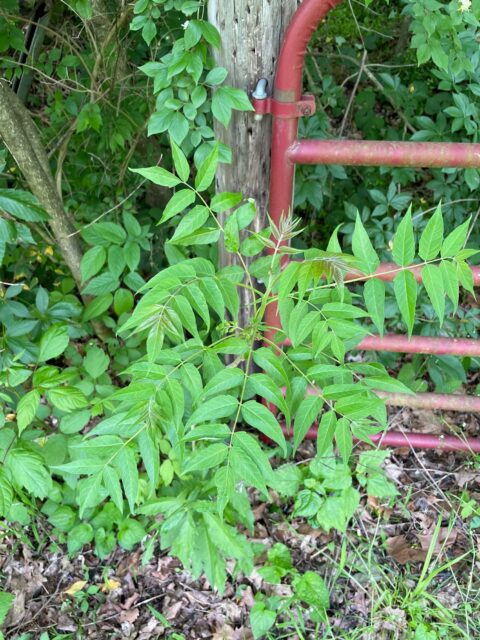
Tree of heaven grows best in wet areas and also disperses a chemical that inhibits surrounding plant growth just like black walnut.
American Sycamore
The American sycamore or Platanus occidentalis is an easily recognizable tree species that loves growing next to water sources like the riparian creek area this one was found at. Its most obvious characteristic is its peely bark, ranging in color from brown to gray to white. Its leaves resemble very large maple leaves, and this tree produces spiky fruits not noted during this site visit. This species has alternate simple lobed leaves and its roots often hang into the water its found by, providing shelter for many fish species.
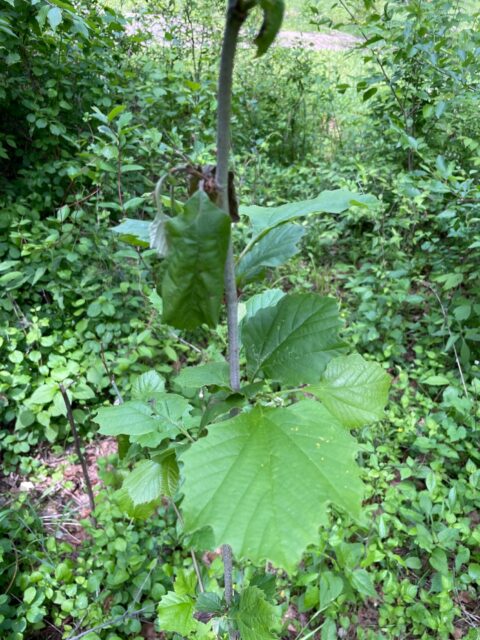
This is a little one, but American sycamore can reach up to 100 feet tall!
Callery Pear
Like tree of heaven, callery pear or Pyrus calleryana is another invasive species in Ohio that originated from Asia. Previously sold as a popular landscaping tree, callery pear is now illegal to sell, plant, or grow in the state. Their alternate branches support their simple and finely serrated glossy leaves. Their fruits are small and brown, and often litter the ground around them. This specimen was found directly next to the water of the creek. Because of its invasiveness, callery pear can most commonly be found near residential areas where its parent plants were cultivated most likely because of their white flowers.

Callery pear can start flowering as young as 3 years old!
Green Ash
Green ash or Fraxinus pennsylvanica is one of five ash species found in the state and can be one of the trickier species to distinguish. This species has opposite and pinnately compound leaves with ~7 leaflets. This specimen was found higher about 10 yards from the stream bank while still being in a swampy forest.
The emerald ash borer, an invasive beetle species is the main reason ash are not as common as they used to be in the state.
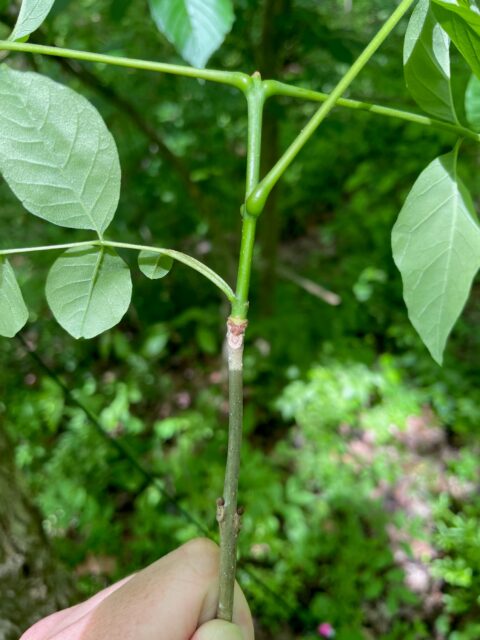
C-shaped bud scars are one of the major distinguishing characteristics of green ash over its fellow ash species.
American Elm
American elms or Ulmus americana are another tree species is another species commonly found around wet areas, just like the one presented below, although this species is not too picky when it comes to its habitat. Its leaves are pinnate, alternating and double toothed. This species has smooth leaves, while its relative slippery elm has extremely hairy leaves.
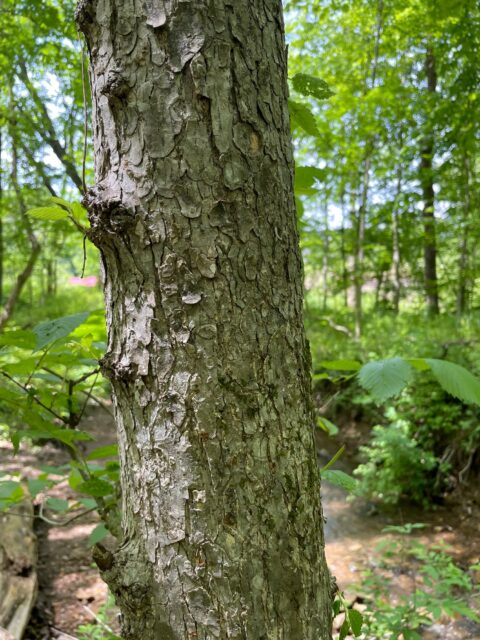
While both the American and slippery elm have gray bark, the American elms furrows tend to be lighter, while slippery elm has reddish furrows
Pawpaw
Pawpaw or asimina triloba is my favorite species of Ohio plant, and for good reason. This species loves the shade and grows in the understory of moist forested areas like the one present below. The pawpaw tree has simple alternate leaves that grow very long. This tree species only gets to about 25 feet tall but grows in patches that can fill up a forest floor.
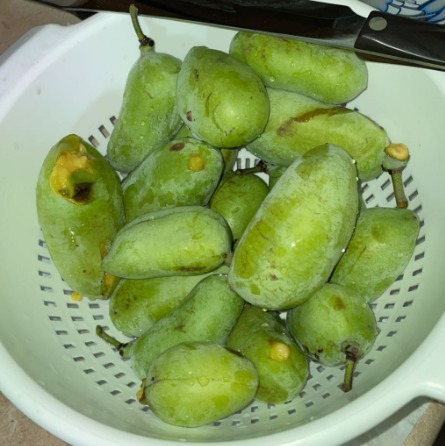
Pawpaws grow an amazing fruit that tastes like banana mixed with mango and pineapple. These were harvested last fall off of a tree very close to campus!
Boxelder maple
Boxelder maples or Acer negundo are a weird one because they look similar to ash species and are the only species of maple to have pinnately compound opposite leaves. When first learning this tree I called it the “poison ivy tree” because its leaves have a very similar size and serration to them. Like the others, this tree was found right next to the creek because this species loves water and riparian forests.
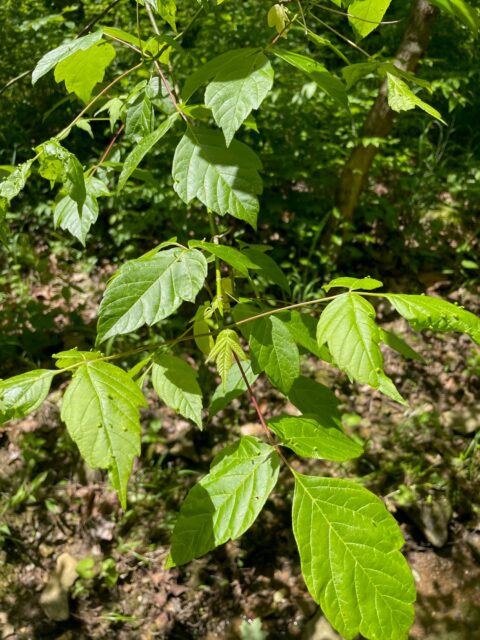
Boxelders have the furthest spreading range of all maples.
Hackberry
Hackberry or Celtis occidentalis is one of those species that has a fun species name to remember. Its bark is very tough and sharp when pressed upon. The best way I found to remember its name was to think “you’re going to have an occident if you fall on Celtis occidentalis“. Yeah, I know it’s a bad joke, but it worked. The species has alternate pinnate simple leaves and is very hardy when it comes to soil parameters which is probably why you see them different places like the creek this one was spotted at.
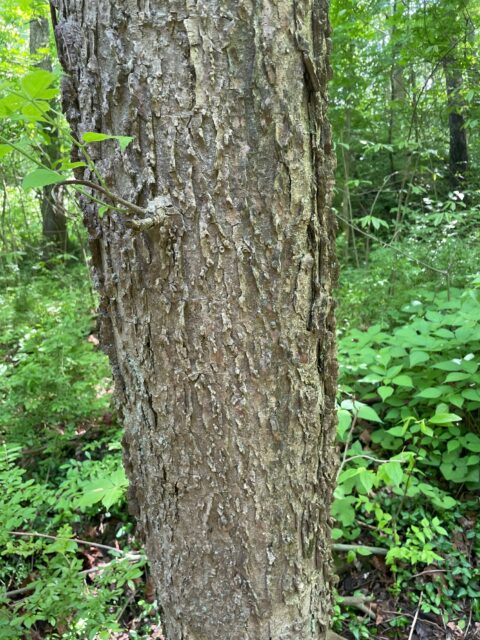
If you could feel pictures this one would be sharp. I didn’t know this, but the fruits are apparently safe for human consumption as well.
Ohio Buckeye
Last but certainly not least, we have Ohios favorite, THE Ohio buckeye or Aesculus glabra. THE Ohio buckeye is one of two buckeye species in the state but is much more common than its relative the yellow buckeye. It is characterized by its rough bark, and opposite palmately compound leaves. Its fruit is spiky and is the mascot of a school with the best football team in the country. This tree was found in the floodplain of the creek which fits with its preferred habitat of swampier forests. The bark of this tree smells horrible if scraped, but we love it anyway.
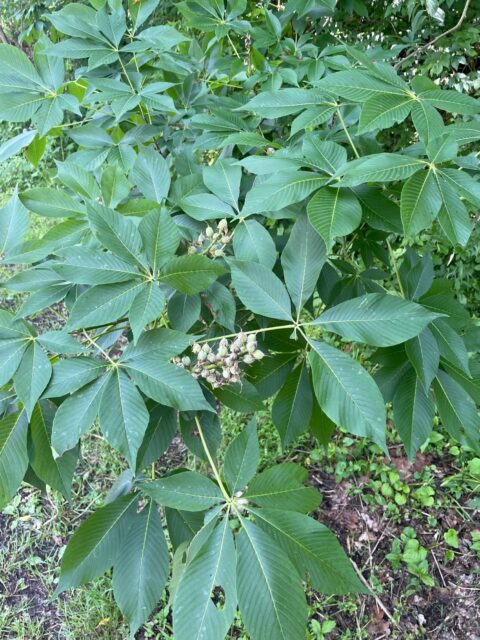
Squirrels love buckeye fruit even though they are poisonous to livestock and humans. Yeah, who said a nut wasn’t a scary mascot?


